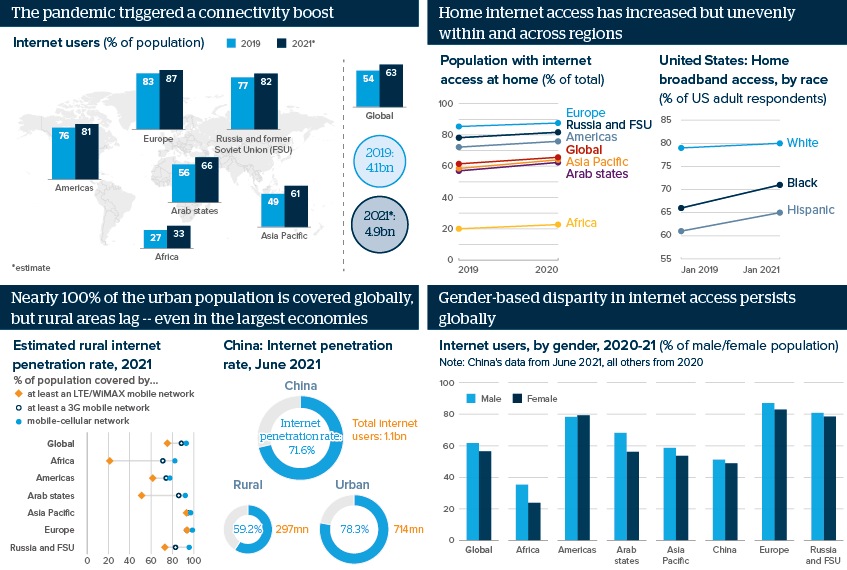COVID connectivity boost leaves social gaps intact
COVID-19 lockdowns incentivised 783 million new users to come online during 2020-21
Source: ITU, Measuring digital development: Facts and figures 2021, December 2021; China Internet Network Information Center, The 48th Statistical Report on China’s Internet Development, August 2021; and Pew Research Center, Internet/Broadband Fact Sheet, April 2021
Outlook
The COVID-19 pandemic boosted internet connectivity globally, according to UN data released yesterday. However, as in the pre-pandemic era, the gains are spread unevenly across regions and social groups, underlining the hurdles to ‘building back better’.
Over 60% of the population in every region is now online and has home broadband access, except in Africa, where the reverse is true: 67% of Africa’s population is offline and 77% has no broadband at home.
Social gaps in digital access persist even within the world’s two largest economies. White households in the United States are significantly more likely to have home broadband access than their Black or Hispanic counterparts. Urban dwellers and men are more likely to be online in China, as elsewhere, compared with rural residents and women.
Impacts
- Racial minorities stand to gain the most from new spending on US digital infrastructure.
- Gaps in rural connectivity will impede market growth of digital services such as e-commerce.
- Since every fifth internet user is in China, Beijing’s crackdown on the digital sector hurts both domestic and foreign technology firms.
See also
- US infrastructure plan will narrow digital divide - Nov 26, 2021
- African digital economy faces uneven outlook - May 14, 2021
- More graphic analysis
